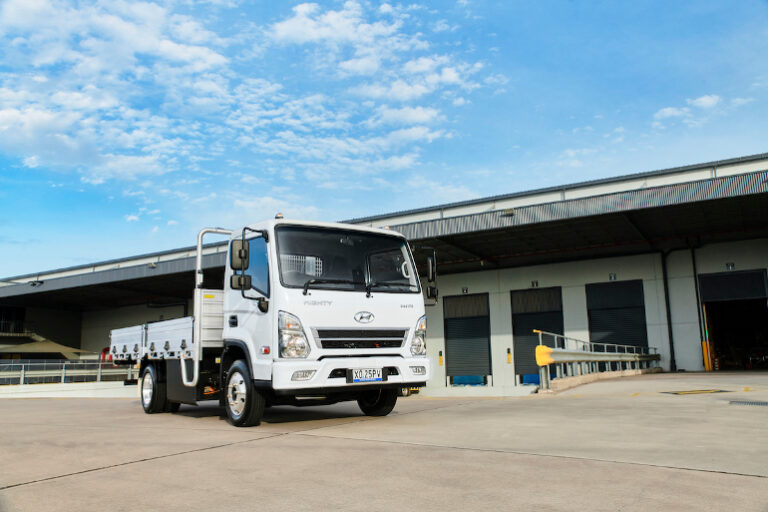Garry Valenzisi, Vice President & General Manager at Iron Mountain ANZ
Electric vehicle (EV) sales are climbing, with EVs now representing 7.4% of total new vehicle sales in Australia, and about 1% of all light vehicles in Australia. For Australia to achieve its goal of net-zero by 2050, it is estimated that more than 50% of all new cars sold in 2030 will need to be EVs. This translates roughly to a goal of 1 million EVs on our roads by the end of 2027.
To truly mitigate the impact on the environment and meet current climate targets, Australia will need to address its bigger automotive challenge – the electrification of corporate fleets, trucks, and heavy transport vehicles.
Although corporate fleets make up a quarter of vehicles on the road, they contribute to two-thirds of all greenhouse gas emissions from road transport.
With an increasing demand for heavy transport vehicles and trucks, driven by changing consumer demands and behaviours, corporate fleets must not be left behind in the current push to electrify Australia’s transport systems.
The warehouse and logistics industries have already made great strides in achieving sustainability goals in recent years in areas such as solar, lighting and heating. But the incorporation of EVs in the supply chain has the potential to further reduce carbon emissions and unlock cost savings.
Here are five reasons why EVs are playing a central role in driving the future of these critical industries.
1. Cost-saving benefits
A key benefit of adopting EVs is the cost-saving impact. While supply chain professionals are often faced with the dilemma of EVs having a higher upfront cost, the total cost of ownership means they prove to be less expensive over time. EVs have an electricity cost that is typically 40% cheaper than the fuel costs of similar-sized gasoline vehicles, allowing fleets to save money on refuelling and maintenance costs, as well as the added benefit of avoiding volatile diesel costs. As more and more major cities look to implement low-emission zones and congestion taxes, the cost-saving benefits of EVs may increase even further.
2. Environmental benefits
Carbon emission reduction is now more important than ever, particularly as Australia moves towards its goal of achieving net zero by 2025. Organisations with large road fleets can no longer rely on fuel-engine fleets that release harmful noise and air pollutants. In fact, the Australian Department of Climate Change, Energy, the Environment and Water found that Australia has increased transport emissions (up 6.4% in Co2 emissions), reflecting the ongoing increases in travel demand post-Covid. Additionally, as Australian cities expand in population, road freight demand will continue to accelerate, and businesses will be under pressure to run non-polluting fleets.
3. Confident driving
EVs are also easier to drive and assist drivers with hazard perception. According to Transport NSW, many EVs have been built with the battery running underneath the vehicle, as opposed to the front or rear of the vehicle, which lowers the centre of gravity and provides greater handling. Since adopting a greater number of EVs in 2022, Iron Mountain has yet to see a collision, globally.
4. Future-proofing technological advancements
With the ongoing increased use of artificial intelligence (AI), manufacturers will be able to see prediction insights into various aspects of EVs. This will not only allow for advanced battery chemistries, but also for smart routing, automated driving, and other safety mechanisms. With these technological advances, EV fleets will be able to take advantage of faster than traditional internal combustion engine (ICE) vehicles. A recent example of EV tech advances includes Tesla’s Model 3 which has the ability to self-detect issues and automatically pre-order replacements.
5. Keeping up with the times
EV fleets not only have a positive impact on the environment, but also on the organisation or business itself. With 83% of customers expecting companies to take steps to reduce their environmental impact, transitioning to EV fleets is increasingly transforming from a business choice to a business expectation. Interestingly, PWC research reports found that 76% per cent of consumers said they would discontinue relations with companies that treat the environment poorly.
The road ahead
The electrification of the fleet will not be without its challenges. Infrastructure is a key barrier, as well as range. Very few countries, including Australia, have a robust enough infrastructure to support the targets being set presently. Companies can strive to be self-sufficient and install their own charging points in their facilities, but this is not a cheap venture.
Range is another barrier, especially for those driving in an urban demographic. eHGVs have been slower to market comparatively, and this is largely down to the issue of range. By definition, the larger the vehicle, the longer the distance it usually must travel, and the larger battery it needs. If a transport vehicle is hitting its payload threshold before the cube capacity, adding heavy batteries for longer range will quickly become an issue. Vans also tend to be more urban and require lower mileage, but stem mileage and travelling between various urban areas must be accounted for.
In saying that, manufacturers are in the process of developing longer-range vehicles and smaller corresponding batteries, so we’re certainly seeing steps in the right direction. The long-term benefits of introducing EVs into the supply chain certainly make the jump worthwhile.






